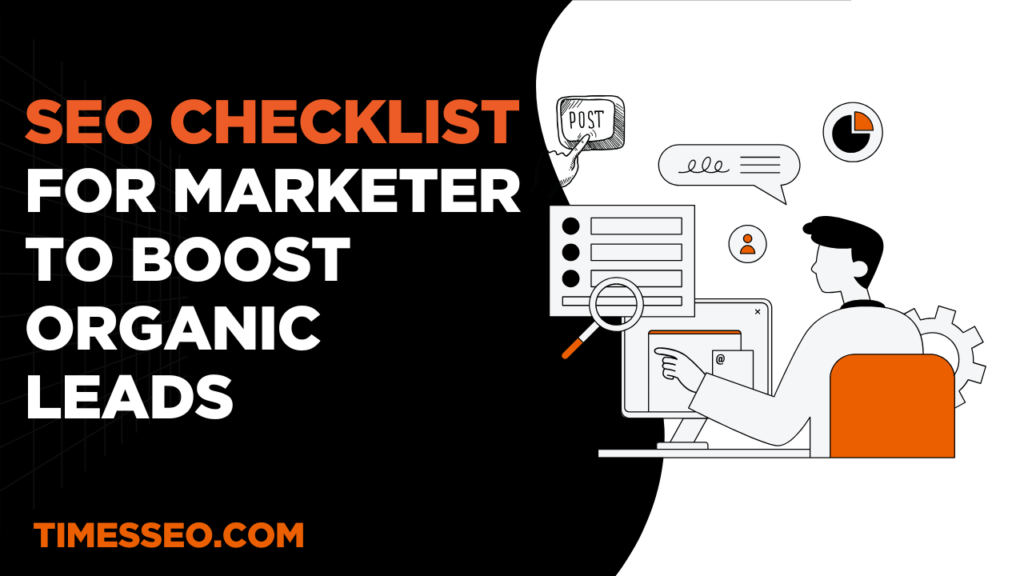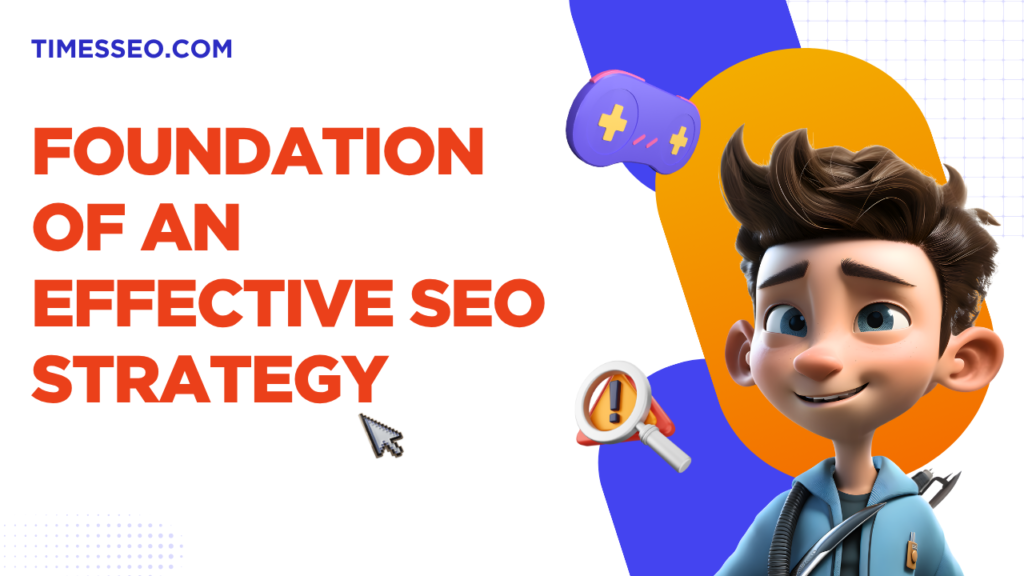
SEO Checklist for Marketer to Boost Organic Leads
Discover a comprehensive SEO checklist for marketers designed to boost organic leads and drive long-term traffic growth. This step-by-step guide covers everything from technical SEO and on-page optimization to content strategy and analytics, helping marketers implement effective tactics that attract, engage, and convert the right audience.
Table of Contents
Introduction
Why SEO Matters for Marketers
Imagine having a storefront on the busiest street in the world — but without a signboard. That is the appearance of a website devoid of SEO. SEO helps marketers make their digital presence visible to the right audience. It’s the engine that drives organic traffic, which means more eyes, more engagement, and ultimately, more leads.
Understanding Organic Leads
Visitors that find your website through organic search results are known as organic leads. These leads are often more valuable because they’re actively searching for what you offer. They’re not random clicks — they’re high-intent prospects.
Foundation of an Effective SEO Strategy
Know Your Audience
If you don’t know who you’re talking to, how will your message land? Understand your audience’s needs, behaviors, search habits, and pain points. Use buyer personas to guide your content and SEO approach.
Set Clear SEO Goals
- Don’t just aim to “rank high on Google.” Define specific goals like:
- Increase traffic by 25% in 3 months
- Generate 100 new organic leads monthly
- Rank in top 3 for 10 core keywords
Analyze Competitors
Your competitors are already targeting the same audience. Analyze their keywords, content strategies, and backlink profiles. Tools like SEMrush, Ahrefs, or SpyFu can help you uncover hidden opportunities.
Technical SEO Checklist
Ensure Mobile-Friendliness
Over 60% of all Google searches come from mobile devices. If your site isn’t mobile-friendly, Google (and users) won’t be kind to you.
Improve Page Speed
Speed is not just a UX factor — it’s a ranking signal. Compress images, enable caching, and use a Content Delivery Network (CDN) to enhance load times.
Use HTTPS for Security
Google favors secure sites. If your site still uses HTTP, switch to HTTPS today. It’s a trust signal that impacts both rankings and conversions.
Fix Crawl Errors and Broken Links
Use Google Search Console to find crawl errors and fix them. Regularly audit your site for 404 errors and redirect broken links.
On-Page SEO Essentials
Keyword Research Done Right
Start with intent. Use tools like Ubersuggest or Google Keyword Planner to find long-tail keywords with low competition and high search volume. Don’t forget to include question-based keywords too.
Optimize Title Tags and Meta Descriptions
Craft click-worthy titles and descriptions. Use your primary keyword and make it sound natural. Think of it like writing a mini-ad for your page.
Structure Content with Headers (H1-H4)
Headings help search engines understand your content’s hierarchy. Use one H1 per page, followed by logical H2, H3, and H4 sections.
Use Internal Linking Strategically
Internal links help spread authority across your site and improve user navigation. Link to related blog posts, product pages, or key landing pages naturally.
Optimize Images and Alt Tags
Large images slow down your site. Compress them and use descriptive alt text that includes relevant keywords — it’s great for accessibility and SEO.
Content Strategy That Converts
Create Value-Driven Content
Your content should provide entertainment, answers to queries, or solutions to issues. Always aim to educate, engage, and convert.
Map Content to the Buyer’s Journey
Create content for each stage:
- Awareness: Blog posts, checklists
- Consideration: Case studies, comparisons
- Decision: Testimonials, free trials, demos
Keep Content Fresh and Updated
Google loves fresh content. Update older posts with new stats, trends, or internal links. Repurpose high-performing blogs into videos or infographics.
Off-Page SEO Techniques
Build Quality Backlinks
Backlinks = trust signals. Reach out to bloggers, submit guest posts, or use digital PR strategies to earn high-quality backlinks from authority sites.
Leverage Social Media for Engagement
While social signals aren’t direct ranking factors, they help in content distribution and brand awareness. Post your content frequently on the websites where your target audience hangs out.
Local SEO for Regional Reach
If you target a specific region, optimize for local SEO. Claim your Google Business Profile, get listed in local directories, and collect customer reviews.
SEO Analytics and Tracking
Set Up Google Analytics and GSC
These free tools are your SEO control room. Track everything — traffic sources, bounce rates, user behavior, and more.
Track Conversions, Not Just Traffic
What’s the use of 10,000 monthly visitors if none convert? Set up goals and events in GA to track downloads, sign-ups, or contact form submissions.
Monitor Keyword Rankings and Trends
Keep tabs on how your keywords are performing. Use tools like Ahrefs or SERPWatcher to track movements and pivot your strategy when needed.
Common Mistakes Marketers Should Avoid
Keyword Stuffing
Cramming keywords is an old-school tactic that now gets you penalized. Write for humans first, search engines second.
Ignoring User Intent
Don’t just focus on volume — focus on why someone is searching. Align content with the searcher’s intent to boost engagement and conversions.
Not Optimizing for Mobile Users
A mobile-first index means if your mobile experience sucks, your rankings will too. Prioritize responsive design and mobile usability.
Conclusion
SEO is a continuous journey, not a one-off activity. By following this comprehensive SEO checklist, marketers can significantly boost their organic leads and drive meaningful business growth. To stay ahead of the game, keep studying, experimenting, and improving your approach.
Frequently Asked Questions
Ideally, review your SEO strategy every quarter. Keep an eye on algorithm updates and performance metrics to make necessary adjustments.
Google Analytics, Google Search Console, Ahrefs, SEMrush, and Moz are among the most popular and effective tools.
Generally, it takes 3–6 months to see significant results, depending on your industry, competition, and the quality of your strategy.
Yes, consistent blogging helps target long-tail keywords, boosts authority, and keeps your site fresh for search engines.
You can start on your own using guides like this, but for advanced strategies and faster results, hiring an expert or agency can be beneficial.
Table of Contents
Popular Posts
-
 Affordable Technical SEO Audit for Small Business: A Complete Guide26 Jun 2025 Blog
Affordable Technical SEO Audit for Small Business: A Complete Guide26 Jun 2025 Blog -
 How to Get an Affordable Technical SEO Audit for Small Business27 Jun 2025 Blog
How to Get an Affordable Technical SEO Audit for Small Business27 Jun 2025 Blog -
 The Ultimate Local SEO Audit Checklist for Startups28 Jun 2025 Blog
The Ultimate Local SEO Audit Checklist for Startups28 Jun 2025 Blog -
 Local SEO Audit Checklist for Startups: A Beginner’s Guide28 Jun 2025 Blog
Local SEO Audit Checklist for Startups: A Beginner’s Guide28 Jun 2025 Blog -
 Top On-Page SEO Audit Steps for Service Websites Every Business Should Know29 Jun 2025 Blog
Top On-Page SEO Audit Steps for Service Websites Every Business Should Know29 Jun 2025 Blog -
 Technical SEO for WordPress: The Ultimate Beginner’s Guide01 Jul 2025 Blog
Technical SEO for WordPress: The Ultimate Beginner’s Guide01 Jul 2025 Blog -
 The Impact of On-Page SEO Audit Steps for Service Websites on UX01 Jul 2025 Blog
The Impact of On-Page SEO Audit Steps for Service Websites on UX01 Jul 2025 Blog -
 Technical Mobile SEO Audit Tips for Developers02 Jul 2025 Blog
Technical Mobile SEO Audit Tips for Developers02 Jul 2025 Blog -
 Complete SEO Backlink Audit Guide for Better Google Rankings03 Jul 2025 Blog
Complete SEO Backlink Audit Guide for Better Google Rankings03 Jul 2025 Blog -
 Boost Your Rankings with Technical SEO for WordPress01 Jul 2025 Blog
Boost Your Rankings with Technical SEO for WordPress01 Jul 2025 Blog






